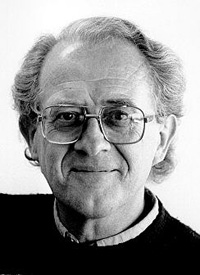Herman Ooms
Dear Colleagues,
It is with great enthusiasm and excitement that I have the pleasure to invite you to twopublic lectures by the eminent scholar in cultural theories, Japanese history and thought, Prof. Herman Ooms, UCLA.
1. "Daoism in Ancient Japan: Withered or Suppressed?"
Monday, October 27, 18:15, Institute for East Asian Art History, Seminarstr. 4, First Floor (Erdgeschoss), Seminar room
Abstract:
The diffuse nature of Daoism in early Japan has kept the historiographical debate concerning its presence in the archipelago unresolved. Yet, in the late seventh century, under the Yamato rulers Tenmu and Jitō, Daoist elements played an important role in articulating the sacred dimensions of tennō rule. On the other hand, Daoism is often associated in the historical record of the eighth century with plots and subversive movements that were suppressed by the very state that had adopted its symbolics. This paper examines these two aspects of Daoism's role in ancient Japan with special emphasis on the Chinkon-sai ritual while looking into the specific China-Yamato connection apparent in the adoption of Daoist aspects.
2. "Beyond the Indigenous: Justifications for Rulership around the Tenmu Dynasty, 650 - 800."
Tuesday, October 28, 18:15, Institute of Japanese Studies, Akademiestr. 4-8, Second Floor (1. Stock), Room 136
Abstract:
Political ideology in ancient Japan was not limited to divine imperial ancestry as spelled out in the Kojiki and Nihon shoki. Mytho-history constituted only one phase or layer of multiple ways of symbolizing Yamato's new ruling authority; and vertical sacralization was only half of its message. Posthumous names for rulers also reveal alternate, patterned ways in which individual reigns were conceived and represented. Daoist symbols were used; some rulers presented themselves as servants of the Buddha. Finally, the new palace-cities of Fujiwara-kyō and Heijō-kyō were designed to give spatial expression to the nature of politico-religious rule. This paper analyzes the plurality of these symbolics centered on the Tenmu dynasty.
The best-known among Prof. Ooms' many publications is probably his ground-breaking study on the religious, political and social set-up of the Tokugawa dynasty in the early seventeenth century, (Tokugawa Ideology: Early Constructs, 1570 - 1680, Princeton University Press, 1985), the Japanese translation of which (Tokyo: Perikansha, 1990) received the Watsuji Tetsuro Culture Prize in 1992.
In the upcoming lectures he introduces aspects of his most recent book, Imperial Politics and Symbolics in Ancient Japan: The Tenmu Dynasty, 650 - 800, released by Hawai'i Press earlier this year.
For more on the speaker:
We are grateful for funding by the Cluster of Excellency, Asia and Europe in a Global Context: Shifting Asymmetries in Cultural Flows at the University of Heidelberg, which sponsored the lectures.
Best,
Melanie Trede with Judit Arokay and Inken Prohl



